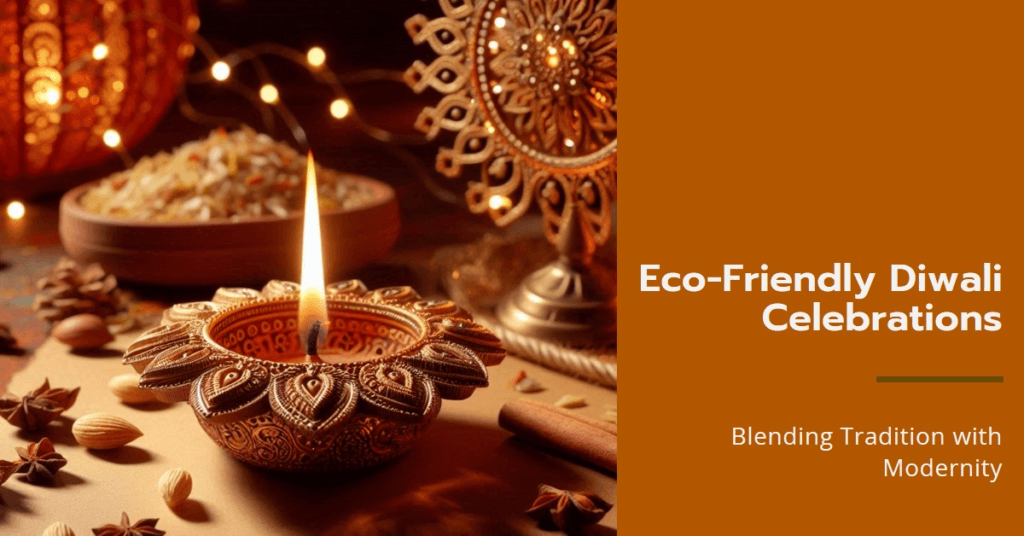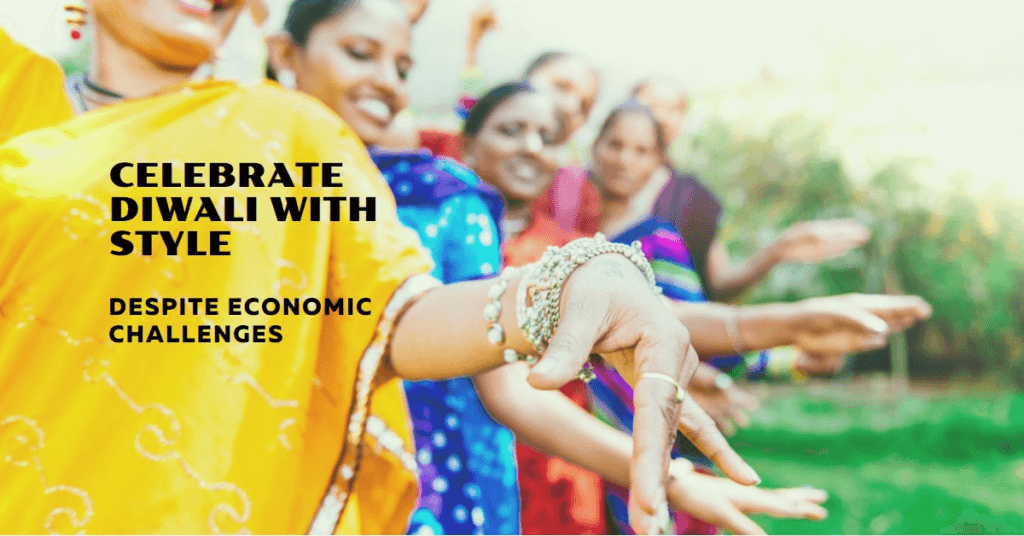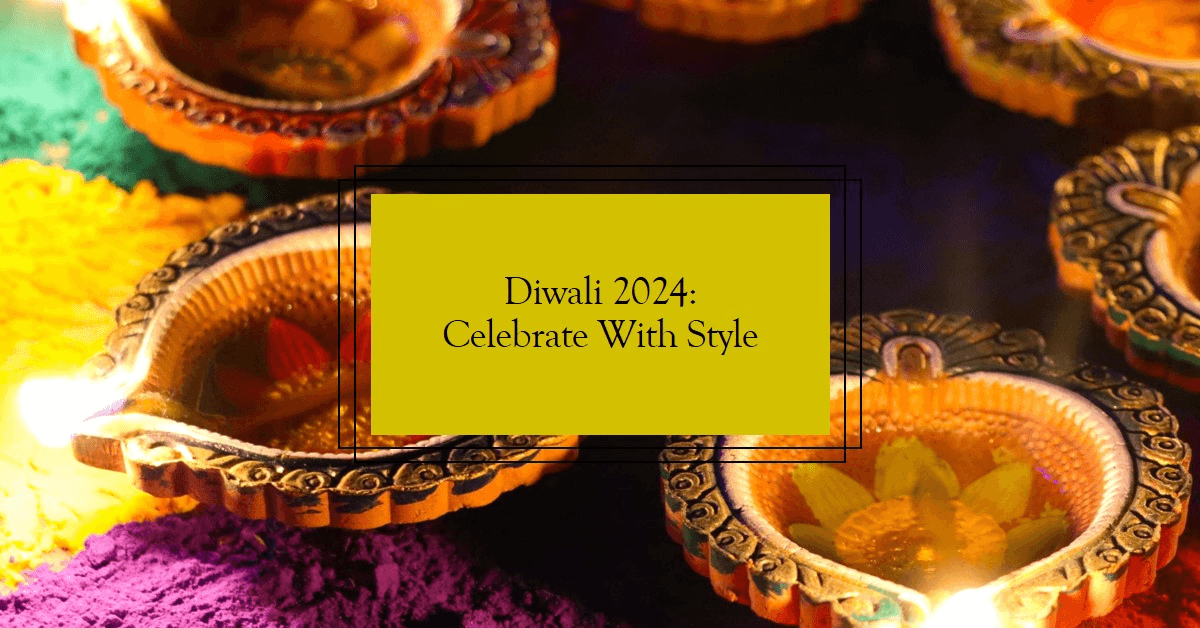Diwali 2024, the festival of lights, holds a significant place in the hearts of millions of Indians and the global diaspora. The five-day celebration, rooted in culture and tradition, is marked by joy, devotion, and grandeur. In 2024, Diwali takes place from November 1 to November 5, bringing with it not only celebrations but also significant economic activity. From eco-friendly trends to the profound economic impact on retail, the Diwali season reflects both cultural values and modern consumerism.
This article explores how Diwali celebrations have evolved, focusing on new trends in sustainability, consumer behavior, shopping patterns, and how this festive season impacts India’s economy.
The Evolving Face of Diwali: A Blend of Tradition and Modernity

Diwali is traditionally celebrated by lighting oil lamps (diyas), offering prayers, exchanging sweets, and bursting fireworks. However, as India progresses, so do the ways people observe the festival. Diwali in 2024 is set to be more environmentally conscious, with a growing number of people opting for eco-friendly celebrations, and the economy is likely to see significant fluctuations due to changing consumer habits.
Eco-friendly Diwali is no longer a niche movement. The demand for sustainable products has surged, with many families avoiding firecrackers in favor of noise-free and pollution-free celebrations. More individuals are opting for energy-efficient LED lights instead of conventional diyas, and the use of natural materials for decorations is becoming common. Brands have also adapted, offering eco-friendly alternatives in lighting, gift-wrapping, and even in food packaging.
Emerging Trends for Diwali 2024
- Eco-friendly Celebrations
- Over the last few years, the push for a “green Diwali” has gained momentum, and in 2024, it has become mainstream. According to a report by The Energy and Resources Institute (TERI), an increasing number of urban families are switching to eco-friendly firecrackers made from biodegradable materials. These firecrackers, while still offering the thrill of light and sound, reduce harmful emissions. The reduction of carbon footprints is becoming a prominent aspect of the celebrations.
- Eco-friendly diyas made from clay, cow dung, or biodegradable materials are replacing plastic and wax-based products. Many families are planting trees or supporting environmental causes as part of their Diwali charity.
- Sustainable Gifting
- Gifting is a crucial part of Diwali, but there is a visible shift towards sustainable gifting options. People are now opting for gifts that align with eco-friendly principles, such as reusable items, organic products, and experiences rather than material goods. For instance, plant-based hampers, handmade products, and fair-trade goods are gaining popularity. Many e-commerce websites are promoting sustainable gifts as a central part of their marketing strategies during Diwali 2024.
- Additionally, several companies are promoting minimalist gifting—the idea of gifting one meaningful, high-quality product instead of multiple small, disposable ones. This reflects a broader trend towards conscious consumption, something retailers are also recognizing.
- Digital Diwali
- The pandemic accelerated the adoption of digital means to celebrate festivals, and while social gatherings have returned, digital celebrations remain. Virtual pujas, online Diwali parties, and digital gifting are convenient options for those living far from family. This trend is especially significant among the Indian diaspora in the US, UK, Canada, and other parts of the world.
- Major Indian e-commerce platforms like Amazon India and Flipkart continue to offer digital gifts such as e-vouchers and gift cards, which have become preferred options due to their ease of use and personalization.
Shopping Trends: The Consumer Behavior Shift
The period leading up to Diwali is one of the most lucrative for retailers in India, as consumers indulge in extensive shopping sprees. From clothes to electronics, from home décor to vehicles, the Diwali season is a time of heightened consumer activity. But in 2024, certain trends have started shaping how people approach their purchases.
- Increased Demand for Electronics
- Diwali has always been synonymous with splurging on new gadgets. Be it smartphones, smartwatches, or home appliances, electronic sales soar during this period. 5G smartphones, smart home devices, and wearables are expected to dominate consumer interest during Diwali 2024. Retailers, both offline and online, are offering massive discounts and bundled offers, leading to a surge in demand for the latest tech.
- According to market research by Statista, India’s e-commerce sector is set to experience a 35% growth during the 2024 festive season, primarily driven by sales in the electronics segment. This can be attributed to high disposable incomes and a growing preference for upgrading personal gadgets.
- Apparel and Fashion Trends
- Fashion, specifically ethnic wear, plays a significant role during Diwali. In 2024, sustainable fashion has become a priority for many consumers. More people are purchasing clothes made from organic cotton, recycled fabrics, and handmade textiles. Traditional garments such as sarees and lehenga cholis with a modern twist are popular, catering to both the young and older generations.
- Additionally, online shopping platforms are reporting increased demand for customized and personalized ethnic wear, providing a more engaging shopping experience for the tech-savvy generation.
- Gold and Jewelry
- Purchasing gold and jewelry during Diwali is considered auspicious in Indian culture. The sale of gold typically sees a spike, particularly during Dhanteras, a day dedicated to buying precious metals. According to the World Gold Council, the demand for gold is expected to rise by 12% during the Diwali season of 2024, despite fluctuating global gold prices. Retailers are offering significant discounts and cashback schemes to lure buyers, making this season a gold rush in the truest sense.
Economic Impact of Diwali 2024
The economic impact of Diwali is profound, not just because of increased consumer spending but also due to the ripple effects across industries such as retail, manufacturing, logistics, and advertising. In 2024, Diwali is expected to generate billions in revenue for businesses, from local shopkeepers to global e-commerce giants.
- Retail Boom
- Diwali is the high point of India’s annual retail cycle. According to India Brand Equity Foundation (IBEF), festive season sales contribute to more than 30% of annual revenue for many businesses. In 2024, the retail sector is expected to experience an uptick of 20-25% in sales, driven by deep discounts, consumer promotions, and easy financing options for big-ticket items such as appliances and vehicles.
- The rise of e-commerce platforms and mobile payments has transformed the shopping experience. While traditional brick-and-mortar stores still play a crucial role, more consumers are turning to online platforms for convenience, variety, and deals.
- Impact on Small Businesses
- Diwali is a lifeline for small and medium-sized enterprises (SMEs). From manufacturers of traditional decorations to confectionery makers, the season offers a much-needed boost in revenue. However, the growing influence of large e-commerce platforms has challenged SMEs to adapt. Many small businesses have gone digital to compete with larger retailers, often listing their products on Amazon, Flipkart, or Myntra.
- Some local retailers are leveraging social media platforms like Instagram and WhatsApp to promote their products, using the power of digital marketing to reach a broader audience.
- Job Creation and Temporary Employment
- The festive season also leads to job creation, especially in the retail, logistics, and delivery sectors. Temporary workers are hired to manage increased workloads in manufacturing units, stores, and delivery services. E-commerce companies like Amazon and Flipkart announced significant recruitment drives to meet the increased demand during the Diwali 2024 shopping period, further boosting employment across the country.
Consumer Spending and Economic Sentiment

The state of the economy often dictates how consumers approach Diwali. In Diwali 2024, rising inflation and increasing interest rates have impacted consumer spending power, yet Diwali continues to be a period where people loosen their purse strings. According to The Economic Times, Indian households are expected to increase their Diwali budgets by an average of 12%, focusing primarily on durables, apparel, and jewelry.
However, a shift in consumer behavior is evident, with buyers becoming more cautious and value-oriented. Instead of impulsive purchases, people are actively seeking discounts and cashback offers. Buy now, pay later (BNPL) schemes are seeing increased adoption, particularly among millennials, as they offer a more flexible approach to managing big-ticket purchases.
Conclusion: Diwali’s Resilient Economic Impact
Despite global economic uncertainties, Diwali 2024 remains a period of celebration, spending, and economic growth. With eco-friendly trends shaping how people celebrate and consumers becoming more mindful of their spending, the festival is a testament to how culture and economy are intertwined in modern India.
Whether through eco-friendly diyas or digital gifting, the essence of Diwali remains untouched, even as the ways people celebrate evolve with time. The economic impact, meanwhile, continues to grow, reinforcing the significance of Diwali as both a cultural and commercial powerhouse in India.
For more on how Diwali trends evolve year by year, check out our complete guide on India’s festive economy and our analysis of Indian consumer behavior during festive seasons.
External Resources:










